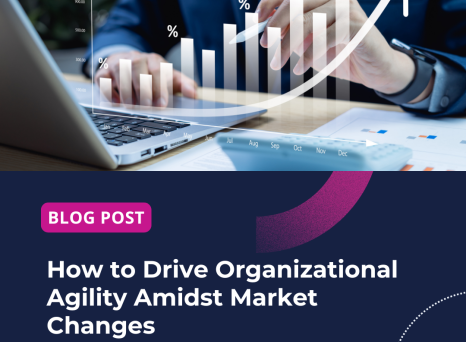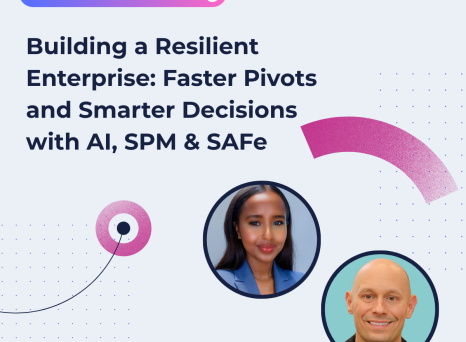This is the fourth installment in our series revisiting some of the key messages from our recent webinar on “How Agile PMOs can support Financial Planning“. Read the first article on the Role of the PMO: Help bridge the Agile expectations gap here, the second on The State of Enterprise Agile here, and the third on the Agile PMO here.
If you've followed this series with us over the summer, then you know that some of the key roles of today's PMO include helping the organization realize the benefits of Agile, develop Agile beyond product to scale to the whole organization, and support product teams by providing planning expertise and help manage dependencies.
In this clip, Margo Visitacion, Vice president and principal analyst with Forrester, one of the leading analyst IT advisory first, introduces another key role of modern PMOs: building best practices around Agile, and project and portfolio management, and helping to build communities inside the organizations they serve.
Full Transcript below
(Lightly redacted for clarity)
[The] PMO as a facilitator, is managing the activities of the portfolio and communicating the feedback of the portfolio.
The PMO as a Center of Excellence is also helping organizations build practices and communities. So they're becoming very focused on becoming a servant leader to the organizations that they're supporting.
By knowing and communicating their strategic themes, they can help then help product teams identify what their customers need. And to select the right types of product. They are helping and providing guidance to those teams to select for value and their providing the measurement activities and reporting structures to determine that companies met their objectives.
The activities as a CoE [Center of Excellence], fall into the areas of Agile Leadership, Agile Coaching, Mentorships being able to develop Agile Coaching, so Agile Coaching can go out into working with the individual teams themselves.
They're helping foster Communities of Practice. We're seeing a lot of organizations starting to leverage the Spotify model, to build communities. The CoE in those areas in the Agile world are helping to build up those Communities of Practice as well.
They're also developing standard measurement structures like Objectives and Key Results or OKRs to build pragmatic metrics guidance for companies to help them achieve their objectives and develop personal and technology and business skills.
And finally, at the end of the day, in order to get that level of transparency and to put the lens on the organization, they're building a portfolio ecosystem to help drive visibility.
The PMO as a center for excellence has the potential to transform processes within an organization for the better – improving everything from process visibility and metrics, to the fostering of communities and best practices, including Agile coaching and mentoring.
By providing process guidance for the full portfolio, the PMO has a unique insight that provides informed development of best practices for its organization. It is the PMO's job to communicate this insight back into the organization, to provide support in achieving KPIs and objectives.
We hope you've enjoyed our series with Forrester on the Agile PMO over the summer. Stay tuned for more from Planisware on process, innovation, and more!


